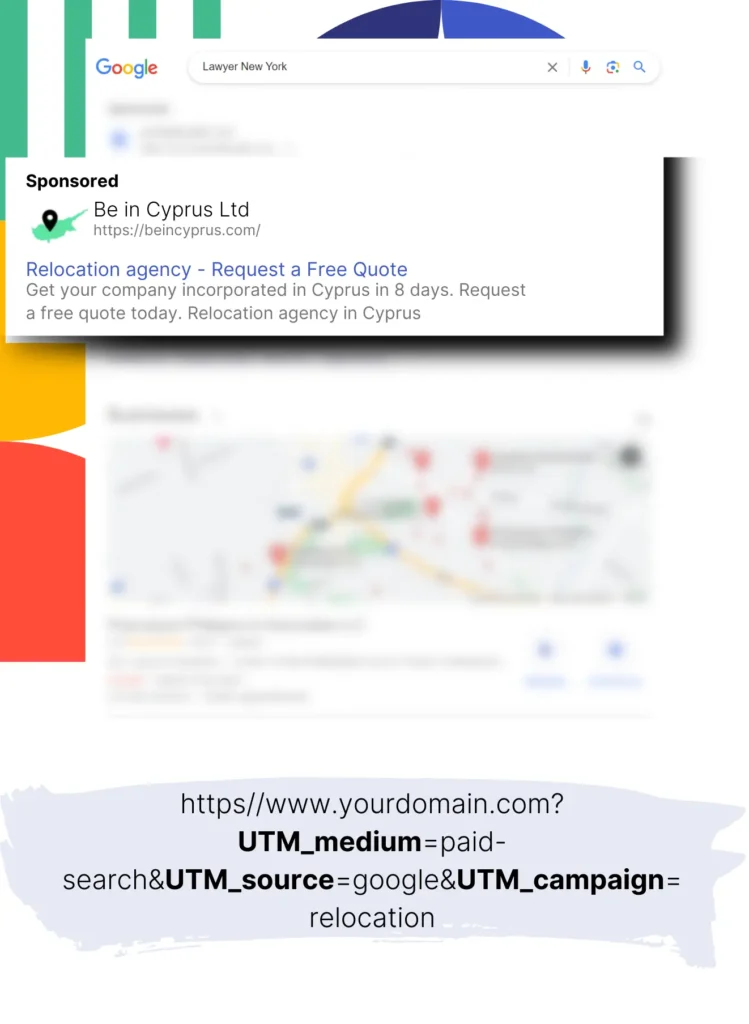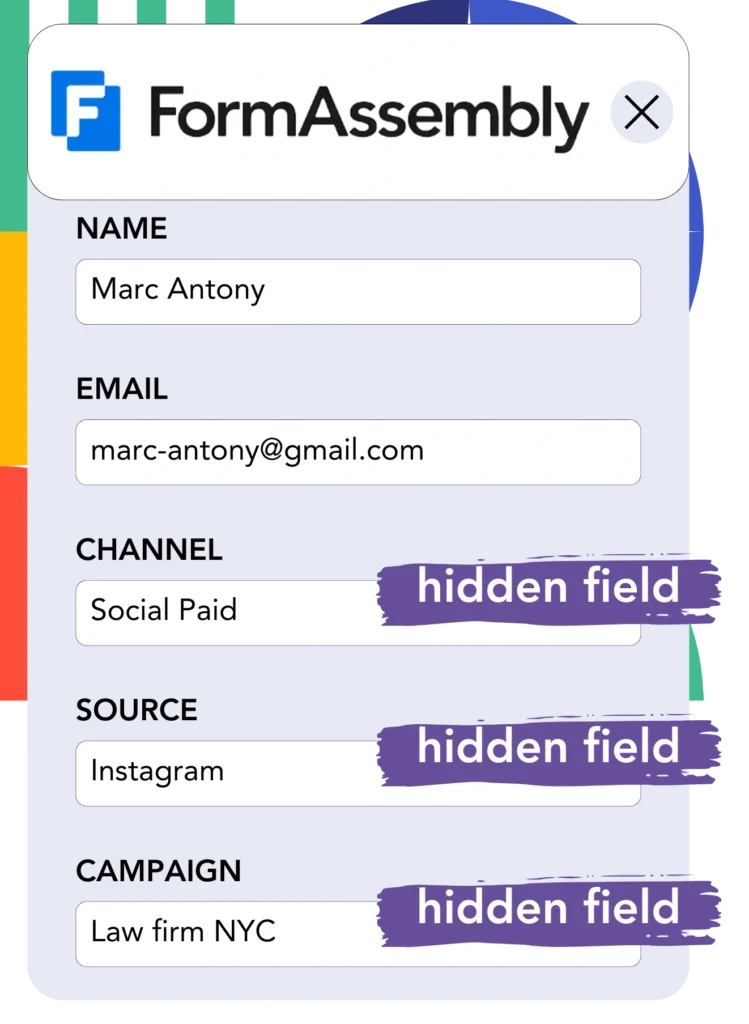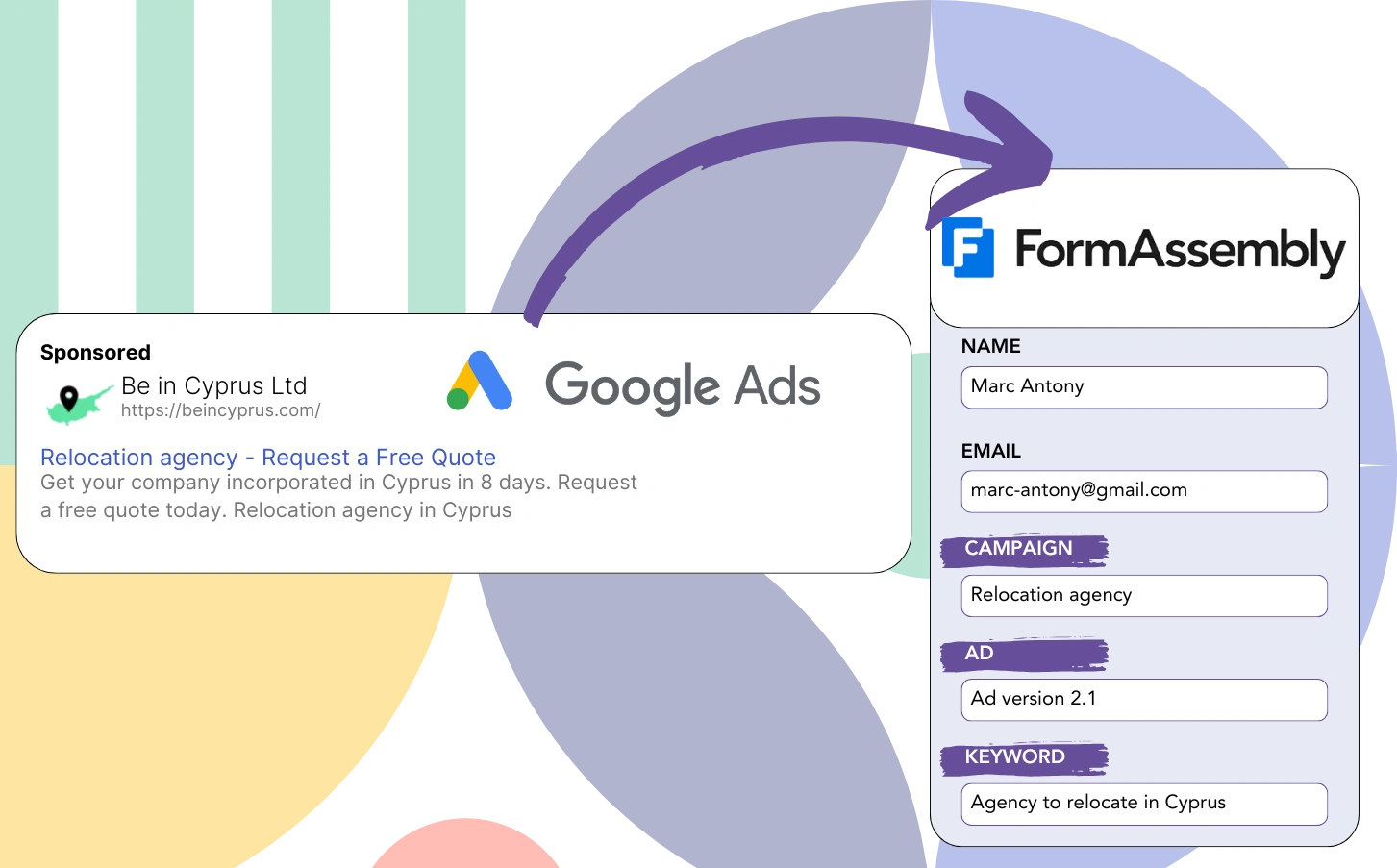Do you need help figuring out which Google Ads campaigns are responsible for your leads?
This is a known issue. Google Ads presents lead totals for campaigns, ads, or keywords but doesn’t include specific lead-level data.
Thus, you are unable to ascertain which campaign, ad, or keyword resulted in leads that converted into customers.
Leadsources overcomes this problem.
With Leadsources, you can finally monitor your Google Ads data at the lead level for campaigns, ads, and keywords.
FormAssembly can then hold Google Ads data for each lead, detailing the campaign, ad, and keyword.
This lets you generate reports like “Keywords that generated the most leads” and choose which keywords to enhance or eliminate.
Let’s get going!
Capture Google Ads lead data in FormAssembly in 4 steps
Step 1: Add Leadsources in the head tag of your website

Sign up to Leadsources.io, and benefit from our 14-day free trial.
Insert the Leadsources code into your site’s head tag. No need for coding skills.
Simply follow this easy step-by-step guide.
Step 2: Add the UTM parameters to your Google Ads campaigns

Add the UTM parameters for tracking to each of your Google Ads campaigns.
Examples of UTM parameters you might use in your ad are:
- UTM_source
- UTM_campaign
- UTM_term
- UTM_content
Leadsources provides additional insights beyond UTM parameters, such as channel, landing page, and landing page subfolder, to give a thorough lead-level view.
Step 3: Add the hidden fields in FormAssembly

As users complete your FormAssembly (name, email, etc.), Leadsources automatically populates the hidden fields with relevant Google Ads data (campaign, ad, keyword, landing page, etc.).
➡️ How to add hidden fields in FormAssembly
The Google Ads details will be stored directly in your FormAssembly by Leadsources.
Step 4: Capture the Google Ads data in FormAssembly

When visitors click on your Google Ads ad and arrive at your site, Leadsources captures the associated Google Ads data (campaign, ad, keyword, landing page, etc.).
The hidden fields in your FormAssembly are automatically filled with Google Ads data by Leadsources.
Upon completing the form, Google Ads data and responses are delivered to the FormAssembly submissions page.
How does Leadsources work?
By placing the Leadsources code in the head section of your site, it will gather Google Ads data (UTM parameters and referrer) whenever someone visits.
The collected Google Ads data is saved into the hidden fields of your FormAssembly.
Even without UTM parameters in the URL, Leadsources will capture visitor data using the referrer:
- Channel
- Source
- Campaign
- Landing page
- Landing page subfolder
This approach ensures you can track critical lead source details even in the absence of UTM parameters, such as:
- On Google Search
- On your Instagram bio link
- On your social media posts
- Etc.
Most tools capture lead data only when UTM parameters are utilized, which mainly applies to paid and referral channels which this poses a problem.
Unlike most tools, Leadsources gathers lead data for all channels, regardless of UTM parameters:
- Organic Search
- Paid Search
- Organic Social
- Paid Social
- Referral
- Affiliate
- Display Advertising
- Direct Traffic
This provides a way to collect and centralize all lead source data in one main location.
Pro tip:
Track Google Ads data in all the popular online form builders, including Cognito Forms, Gravity Forms, Jotform, Typeform, WPForms, and more. Learn how to add Google Ads UTM parameters in any form builder.
How to run performance reports
Now that FormAssembly contains your Google Ads data, you can generate performance reports such as:
- Leads per campaign
- Leads per ad
- Leads per keyword
- Etc.
This aids in making thoughtful choices regarding your Google Ads financial investments.
We’ll explore the different kinds of reports you can generate.
Lead performance reports
It is possible to run reports showing how many leads were generated by:
- Channel
- Campaign
- Ad
- Keyword
- Landing page
- Landing page subfolder
Example #1
You can create a report named “Leads by Channel” by exporting data from campaigns across different channels (SEO, PPC, email, etc.).

Example #2
After discovering which channel drives the most leads (e.g., Google Ads), you can select it to see the lead numbers for each specific ad campaign.

Example #3
Once you’ve established which campaign yields the highest number of leads, you can check which keywords are responsible for these leads.

Sales performance report
Identifying high-performing ads and keywords is key, but do they translate into increased revenue?
Importing your FormAssembly data into a CRM helps you generate detailed sales reports.
Example:
| Channels | Search Paid | Social Paid |
| Leads | 50 | 75 |
| Sales | 5 | 6 |
| Average order value | $150 | $100 |
| Revenue | $750 | $600 |
Your findings from Google and Facebook ads indicated that Social Paid ads had a higher lead count than Search Paid ads.
Analysis over several weeks demonstrated that Search Paid ads produced more revenue from fewer leads compared to Social Paid ads, leading you to adjust the budget to favor Search Paid campaigns.
LeadSources tracks the source of each lead in FormAssembly, whether they come from ads, organic search, social, email, etc. and syncs that data with each submission. See the full breakdown on the lead source in FormAssembly page.

